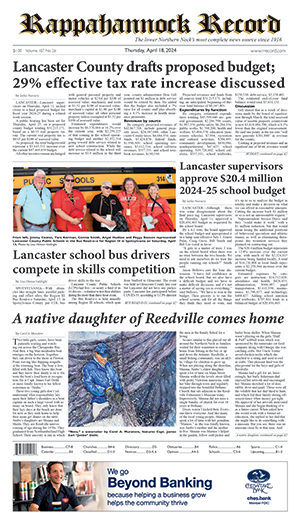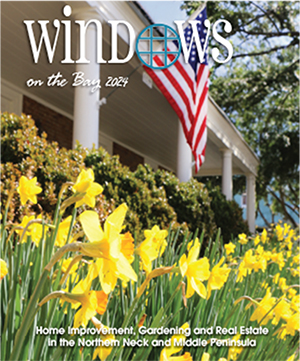
by Denise DeVries
When writer James Pollard Wharton died on February 27, 1992, he left a rich legacy of words. His own books, articles and research on the history of Virginia’s Northern Neck were only a small part of his inheritance.
His influence also awoke the curiosity of others, including folklorist Alan Lomax, who, in the early 1960s, recorded the songs and stories of Wharton’s neighbors and friends. In addition to these writings, Wharton left some images and sounds to be discovered after nearly a century, says Joni Carter. The 16 mm films and audio tapes she found in the Wharton Grove home of Sully Brien now serve as historical documentation of life in the Northern Neck in the 1920s and 1930s.
Born in Eastern Point, Conn., Wharton spent most of his life at Wharton Grove in Weems. His father, evangelist Dr. H.M. Wharton, was a co-founder of the Wharton Grove Campground, a Baptist revival site and steamboat stop reached by thousands of people starting in 1893. On becoming sole owner of Wharton Grove, the 72-year old Dr. Wharton began extensive renovations to bring the site into the modern age, adding indoor plumbing and electric lights.
His son James was quoted in “The Land Between Waters” as saying “It was carnival time laced with sermons, hymns and good old time gospel fellowship.” In an interesting foreshadowing of the future, James Wharton wrote that the Grove hosted the “first movie ever shown in the Northern Neck, a Life of Christ.” Crowds continued to flow into the Grove until Dr. Wharton’s death in 1928.
In the 1930s, James Wharton, his sister, and his mother, Lucy Pollard Wharton, began running Wharton Grove as a summer resort. The Grove’s cottages, dining halls, tabernacle and pier again hosted visitors to the Northern Neck. During that time, Wharton also worked at the Rappahannock Record, occasionally acting as editor, thanks to his previous newspaper experience. For a short time after his graduation from Johns Hopkins University, James Wharton had worked as a proofreader for the Baltimore Sun. That may have been when he acquired the 16 mm camera he would use to record everyday life in the Northern Neck during the depression era.
Around 1940, Wharton started working for the U.S. Fish and Wildlife Service as a statistical reporter for most of the Eastern seaboard. His articles for various publications brought him recognition as an expert on all aspects of fisheries, and on Colonial history. His research focused primarily on King Carter and the old Corotoman plantation.
During the 1970s, Wharton continued to chronicle Northern Neck History through a quarterly newsletter, Lancaster Heritage, named for the county in which he lived. Historians Clyde and Carolyn Ratcliffe have kept a detailed catalogue of the newsletters and individual articles.
The banner on the first page of the newsletter bears the words “To Heighten The Memories Of A Great Virginia County.” In 1975, subscriptions were $3 a year, and the publication’s address was a P.O. Box in Weems. Its five-year index from April 1971 to October 1974 includes titles such as “Where’d the Name Come From” (also published as a book), “Tribulations of a Storekeeper,” “Tales Told Out of School (Chesapeake Academy),” “Lady With a Spinning Wheel,” and even “Barrooms of Lancaster County.”
Now, with the rediscovery of the lost films of James Wharton, a new chapter begins in the legacy of this great storyteller, says Carter, who serves as executive producer for the project. Carter and a group of other community volunteers, with the permission of the owner Sully Brien, aim to restore the 20 hours of film and complete the unfinished movies.
The final documentary film will serve as a community project giving residents of the Northern Neck have an opportunity to share their stories of the era.
Rappahannock Art League in Kilmarnock will display stills from the Lost Films of the Northern Neck from May 4 through 27. Viewings of original film footage will bring this national film treasure to the community, allowing people to participate actively in the film making process, says Carter.
The film team welcomes input from anyone interested in sharing photos or stories of the Northern Neck in the 1920s and 1930s. To get involved, visit the film’s Facebook page at Wharton Films Project.
Denise DeVries moved to the Northern Neck with her husband Alvaro Ibañez and their daughter Delia in 2001. Denise is a freelance translator and works from home. She enjoys introducing children to poetry through workshops in the schools. As James Wharton believed, “everyone has a story.” For Denise, the Wharton Film Project is an exciting way to revive the stories of the past and discover those of the present and future.











